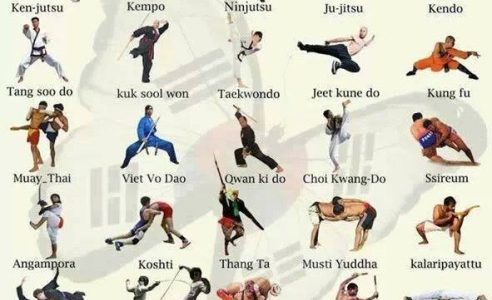Just How Do The Discipline-Centered Technique Of Conventional Martial Arts And The Competition-Driven Nature Of Contemporary Battle Sports Differ? Discover The Considerable Distinctions That Can Shape Your Experience
Just How Do The Discipline-Centered Technique Of Conventional Martial Arts And The Competition-Driven Nature Of Contemporary Battle Sports Differ? Discover The Considerable Distinctions That Can Shape Your Experience
Blog Article
Content By-Sherman Hovgaard
When you think about martial arts, do you lean extra towards the typical practices or the contemporary fight sports? Each path offers one-of-a-kind benefits and experiences, shaped by their viewpoints and training approaches. Traditional martial arts highlight individual growth and discipline, while modern-day battle sporting activities focus on competitors and performance. Comprehending these distinctions can lead you in picking the appropriate technique for your journey. However how do these differences show up in training and ideology?
The Approach and Background Behind Standard Martial arts
While many people connect martial arts with physical battle, the ideology and background behind conventional martial arts run much deeper. martial arts or karate 'll discover that these disciplines emphasize individual growth, technique, and respect.
Stemming from ancient methods, traditional martial arts were usually developed for Self-Defense and spiritual growth. They embody principles such as balance, consistency, and self-discipline, guiding professionals beyond simple battling abilities.
As you train, you'll not just learn strategies yet additionally get insights right into the society and worths that shaped these arts. The rituals and practices, typically passed down via generations, foster a feeling of neighborhood and belonging.
The Competitive Nature of Modern Fight Sports
Modern combat sports have actually changed the landscape of martial arts right into a highly affordable arena, where professional athletes face off in an examination of skill, strategy, and endurance.
You'll see that competitions are usually organized with stringent policies and laws, guaranteeing fair play and safety. These occasions draw in big audiences, sustaining the exhilaration and strength of matchups.
go right here educate carefully, not just for physical expertise but likewise for mental strength, understanding that every information counts in the ring. related resource site during competitions is apparent, as fighters push their limitations to declare success.
Followers appreciate the athleticism and creativity entailed, making contemporary battle sporting activities a thrilling spectacle that continues to advance and astound fanatics all over the world.
Training Approaches and Strategies: A Comparative Analysis
The competitive ambience of contemporary fight sports needs ingenious training techniques that differ considerably from traditional martial arts.
In modern-day training, you'll concentrate on certain strategies, sparring, and conditioning, commonly making use of drills that simulate real battle scenarios. You'll see a focus on measurable performance and frequent competitors to assess your abilities.
On the other hand, standard martial arts prioritize forms, katas, and thoughtful mentors, frequently highlighting technique and regard over competitors.
Training is typically much less intense and might entail repetitive method rather than real-time sparring.
While both approaches develop skill and physical fitness, modern-day battle sports give a more vibrant and adaptable training setting, preparing you for immediate obstacles in the ring or cage.
Choose the course that straightens with your objectives and passions.
Conclusion
In picking in between traditional martial arts and modern-day combat sports, it truly boils down to what you value many. If you're looking for personal growth, technique, and a feeling of community, typical arts might be your finest fit. Yet if you flourish on competitors and real-time obstacles, contemporary fight sports could be the way to go. Inevitably, both courses offer unique benefits, so it's everything about aligning your training with your personal objectives and interests.
